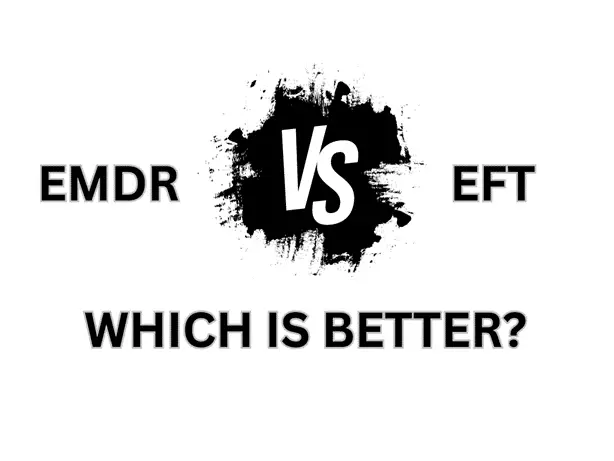Understanding trauma is key to healing. Many people experience trauma without even realizing it—childhood neglect, emotional abuse, medical procedures, or even chronic stress can all leave a lasting impact. Trauma-informed therapy offers a safe, effective path to recovery. For that, in this guide, you’ll learn what trauma-informed therapy is, how it works, who it helps, and how to access support that truly understands the impact of trauma.
What Is Trauma-Informed Therapy?
Trauma-informed therapy is an approach that recognizes the widespread impact of trauma and actively works to avoid re-traumatization. It’s not a technique—it’s a framework.
Instead of asking, “What’s wrong with you?” a trauma-informed therapist asks, “What happened to you?”
This shift is powerful. It builds trust, fosters safety, and respects your boundaries.
Core Principles of Trauma-Informed Therapy
Effective trauma-informed care is guided by six core principles:
- Safety – Physical, emotional, and relational safety come first.
- Trustworthiness and Transparency – Clear, honest communication at all times.
- Peer Support – Healing can happen in community.
- Collaboration – You are the expert on your experience.
- Empowerment – Focus on your strengths, not your weaknesses.
- Cultural, Historical, and Gender Sensitivity – Honouring your unique background and identity.
Therapists trained in trauma-informed care integrate these principles into every session.
Who Can Benefit?
Trauma-informed therapy is for anyone affected by trauma. That includes:
- Survivors of abuse or neglect
- People with PTSD or complex PTSD
- Veterans
- People recovering from medical trauma or accidents
- First responders
- Those who grew up in high-conflict or unstable homes
- Survivors of intergenerational or systemic trauma
Even if you don’t have a specific “trauma event,” chronic emotional stress can still create trauma responses.
What Does a Session Look Like?
Each therapist works differently, but a session often includes:
- A focus on your nervous system (regulating before processing)
- Open-ended questions that respect your pace
- Collaborative goal setting
- Education about how trauma affects your brain and body
- Techniques for grounding, mindfulness, and emotional regulation
You won’t be pushed to talk about painful memories before you’re ready. Safety is always the priority.
Modalities That Support Trauma Recovery
Trauma-informed therapy is a framework—not a method. But certain therapy types align well with it:
- EMDR Therapy: Helps reprocess traumatic memories safely.
- Cognitive Behavioural Therapy (CBT): Effective for anxiety, depression, and trauma-related thought patterns.
- Somatic Therapy: Uses the body to release trauma held physically.
- Internal Family Systems (IFS): Works with “parts” of the self that protect and carry pain.
- Attachment-Focused Therapy: Builds safe, secure emotional connection.
We offer trauma-informed support through these and other approaches.
Why Trauma-Informed Care Matters
Not all therapy is trauma-informed. Unfortunately, some experiences in therapy can retraumatize clients—especially when therapists lack understanding of trauma responses like dissociation, shutdown, or hypervigilance.
This therapy ensures that your story is heard with care, and that healing doesn’t cause more harm.
It helps clients:
- Build emotional resilience
- Regulate intense feelings
- Reconnect with their body
- Improve relationships
- Break patterns of shame, guilt, or avoidance
Finding the Right Therapist
Here’s what to look for in a trauma-informed therapist:
- Training in trauma-specific therapies like EMDR or somatic work
- Respectful, non-judgmental communication
- Willingness to move at your pace
- Clear boundaries and informed consent
- Cultural sensitivity, especially if you’re Indigenous, LGBTQIA2S+, or from a marginalized background
Explore our directory of trauma-informed therapists and contact us for your first session.
The Healing Journey Is Not Linear
Healing trauma takes time. Some weeks are full of progress. Others bring setbacks. That’s normal.
Trauma-informed therapy doesn’t force quick fixes. Instead, it walks beside you—at your pace—toward long-term emotional and physical well-being.
FAQ
What makes therapy “trauma-informed”?
Trauma-informed therapy recognizes the impact of trauma and actively avoids re-traumatization. It prioritizes safety, trust, collaboration, and empowerment.
Do I need to have a PTSD diagnosis to seek trauma-informed therapy?
No. You can seek help if you feel stuck, overwhelmed, numb, or triggered—even without a formal diagnosis.
How is trauma stored in the body?
Trauma often shows up as chronic tension, digestive issues, insomnia, or emotional numbness. Somatic therapy and EMDR help address these symptoms.
Can trauma-informed therapy help with anxiety or depression?
Yes. Anxiety and depression are often linked to unprocessed trauma. Trauma-informed therapy treats the root, not just the symptoms.










